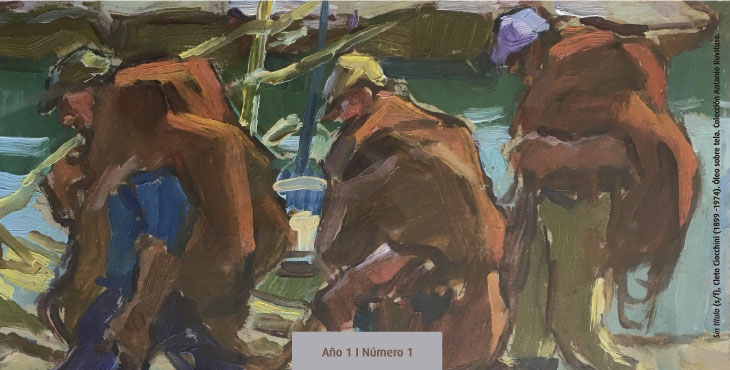A brief historiographic tour of the picturesque
Keywords:
Landscape, picturesque, literatureAbstract
The concept of the picturesque refers, in its Italian origin, to the point of view assumed by the painter which is later elaborated as a theory in England between 1730 and. The picturesque becomes a way of looking at the landscape following the criteria taken from a painting. Applying artistic rules on nature will evidence the need to adapt the way of looking, the need to look appropriately to perfect the landscape canvas. In the aforementioned period, there is rich theoretical and literary metadiscourse, including essays by Rev. William Gilpin or Uvedale Price, as well as William Wordsworth’s poetry and travel guides. The present article aims to draw an analytical outline of the picturesque in England between 1730 and 1830.Downloads
Downloads
Published
How to Cite
Issue
Section
License
Current policy since 2019
The acceptance of the manuscript by the magazine means the non-exclusive cession of the property rights of the authors in favour of the editor, who allows the reuse, after publication (post print), under a license Attribution-NonCommercial-ShareAlikes 4.0 International (BY-NC-SA 4.0).
According to these terms, the material can be copied and redistributed by any means or in any format as long as a) the author and original source of the publication are quoted (magazine and URL of the work), access to the license is provided and whether changes have been made is mentioned; and b) the material is not used for commercial purposes.
The cession of non-exclusive rights means that after the publication (post print) in Armiliar the authors can publish their work in any language, means and format; in such cases it must be mentioned that the material was originally published in this magazine. Such cession also means the authorization of the authors for the work to be collected by SEDICI, the institutional archive of the Universidad Nacional de La Plata, and to be spread in the databases that the editorial team considers appropriate to increase the visibility of the publication and its authors.
Moreover, the magazine encourages the authors to deposit their productions in other institutional and thematic archives under the principle that offering the society the scientific and academic production without any restrictions contributes to a greater exchange of the global knowledge.



























